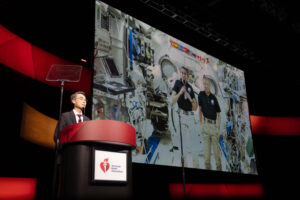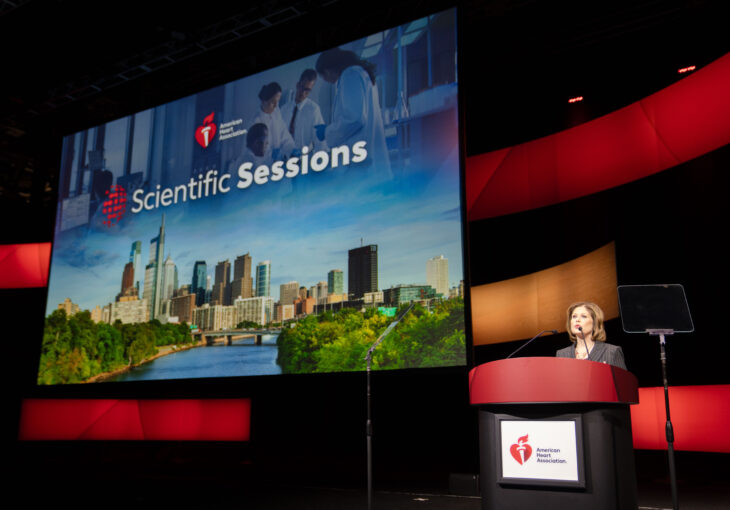In the heart of the American Heart Association’s 2023 Scientific Sessions, a powerful message resonated through the venue at the Pennsylvania Convention Center as Nancy Brown, CEO of the American Heart Association (the Association), took center stage Saturday.
Welcoming a captivated audience, Brown set the tone for the event with an unwavering focus on health and hope. In her opening remarks, she emphasized that “health is why we are all here,” underlining the collective commitment towards improving and extending the health of current and future generations is why we’re all here.
With an optimistic gaze towards the future, Brown declared, “Hope is the optimism of our future.” Hope inspires every step of the process … from idea to research to ultimately daily practice.” In the same vein, she stated the American Heart Association’s vision statement will now include the word hope, reading: “Advancing health and hope for everyone, everywhere.”
As she rallied the audience, she affirmed, “Together, we are delivering health and hope,” setting the stage for an inspiring and impactful Presidential Address. She spotlighted many of the ways the Association is making a difference, including in the telehealth, improving equity-focused policies in communities for the health and well-being of young children and their families, including prenatal care, and supporting more than 120 community-based organizations and entrepreneurs to find solutions that reduce social and economic barriers to health equity. She discussed current progress with the Nation of Lifesavers campaign, which focuses on the importance of hands-only CPR and “Food Is Medicine” research projects that will be announced in the new year.
“Together” was heard throughout the hour and half program. Leading the Lewis A. Conner Presidential Address, Dr. Joseph Wu, the organization’s distinguished volunteer president, took the audience on a compelling journey that wove together his personal background and professional insights. Dr. Wu began by sharing his humble beginnings, born in Taiwan, and immigrating to the United States at the age of nine. He reflected on the formative years spent managing his father’s produce farm in central California, an experience that left an indelible mark on him.
Drawing parallels between farming and scientific research, Dr. Wu emphasized the lessons he gleaned from the hard work and sacrifices of farm workers. His narrative skillfully unfolded, highlighting the collective effort of people working together to achieve results greater than the sum of individual parts—a theme that resonated throughout his life.
Transitioning to his current role as the director of the Stanford Cardiovascular Institute, Dr. Wu seamlessly connected the dots between farming and cutting-edge science. He underscored the similarities he sees between the two, emphasizing the importance of collaboration and synergy in producing impactful outcomes.
He shed light on his lab’s groundbreaking work in differentiating induced pluripotent stem (iPS) cells into various components of cardiovascular disease through basic science research. Notably, he introduced the concept of a “clinical trial in a dish,” using patient-specific iPS cells to test a variety of drugs—a pinnacle of precision cardiovascular medicine.

Dr. Wu encouraged envisioning the next frontiers in cardiovascular medicine, including the potential impact on space travel. One of the mission’s scientific experiments overseen by Dr. Wu and funded by NASA, was to study the impact of microgravity on the human heart. The results will be shared soon, but during the program he shared a video provided by fellow astronauts on the research and shared the intriguing vision of the Association celebrating its 200th anniversary on the planet Mars.
In a thought-provoking conclusion, Dr. Joseph Wu emphasized the significance of resource-sharing for the advancement of science and medicine, exclaiming he shares his own work with others. “Whether we are on a farm, in a research lab, a hospital or office, we are all better off when we are part of a team, especially when we work together to do the right thing for the right reasons. We not only benefit ourselves but also contribute to the well-being of current patients and future generations. Only by “uniting” our efforts will we make the “biggest” advances in preventing and treating heart diseases for the next decade, and for the next century. I believe now – more than ever – is the time for all of us to work together.”
